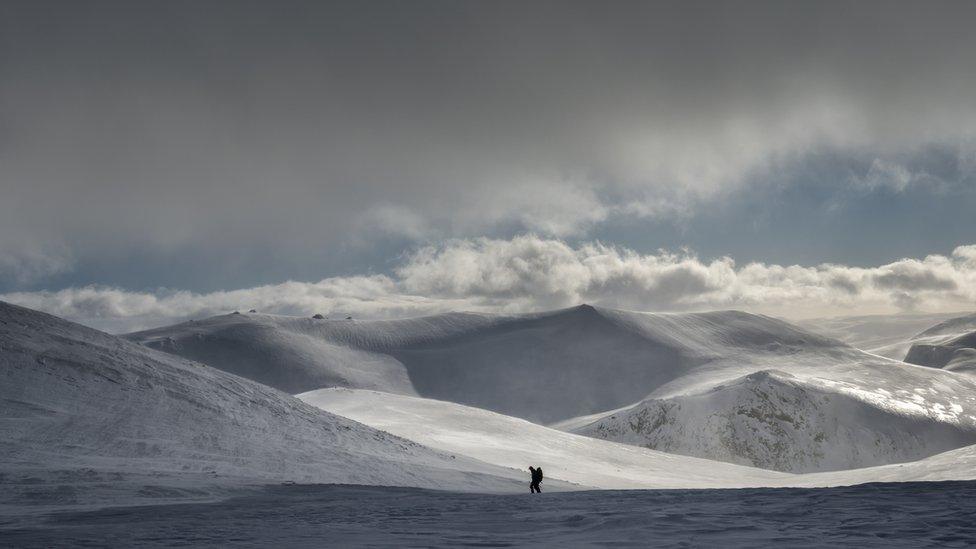Hunter-gatherer rest stop uncovered in Cairngorms
- Published
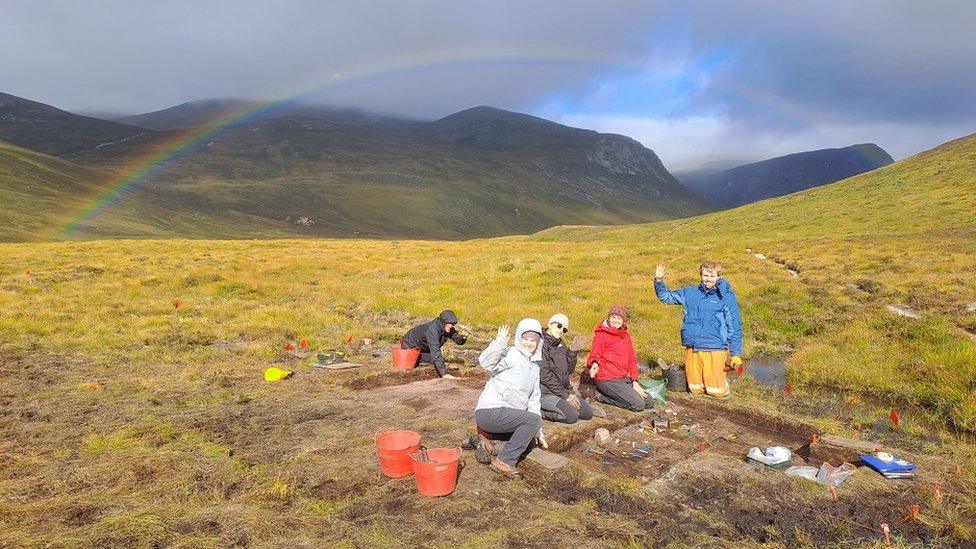
Archaeologists excavated at Sgòr an Eòin in Glen Dee in September
Archaeologists believe they have found a place where some of Scotland's last hunters-gatherers may have paused on a journey through the Cairngorms.
Scotland was home to hunter-gatherers from about 10,000 years ago, after the end of the last ice age.
At Sgòr an Eòin in Glen Dee, archaeologists have uncovered artefacts that could date from that time in the Mesolithic period.
Hunter-gatherer sites have been found at other locations in the Cairngorms.
Teams of experts from University College Dublin (UCD) have been surveying for and excavating Mesolithic sites in the Aberdeenshire glen since 2013.
Evidence of hunter-gatherers were found at Geldie Burn and Chest of Dee in earlier phases of the work, and confirmed through radiocarbon dating.
Sgòr an Eòin, a flat area on an ancient river terrace on National Trust for Scotland's Mar Lodge Estate, has been an area of interest since the site was discovered in 2015.
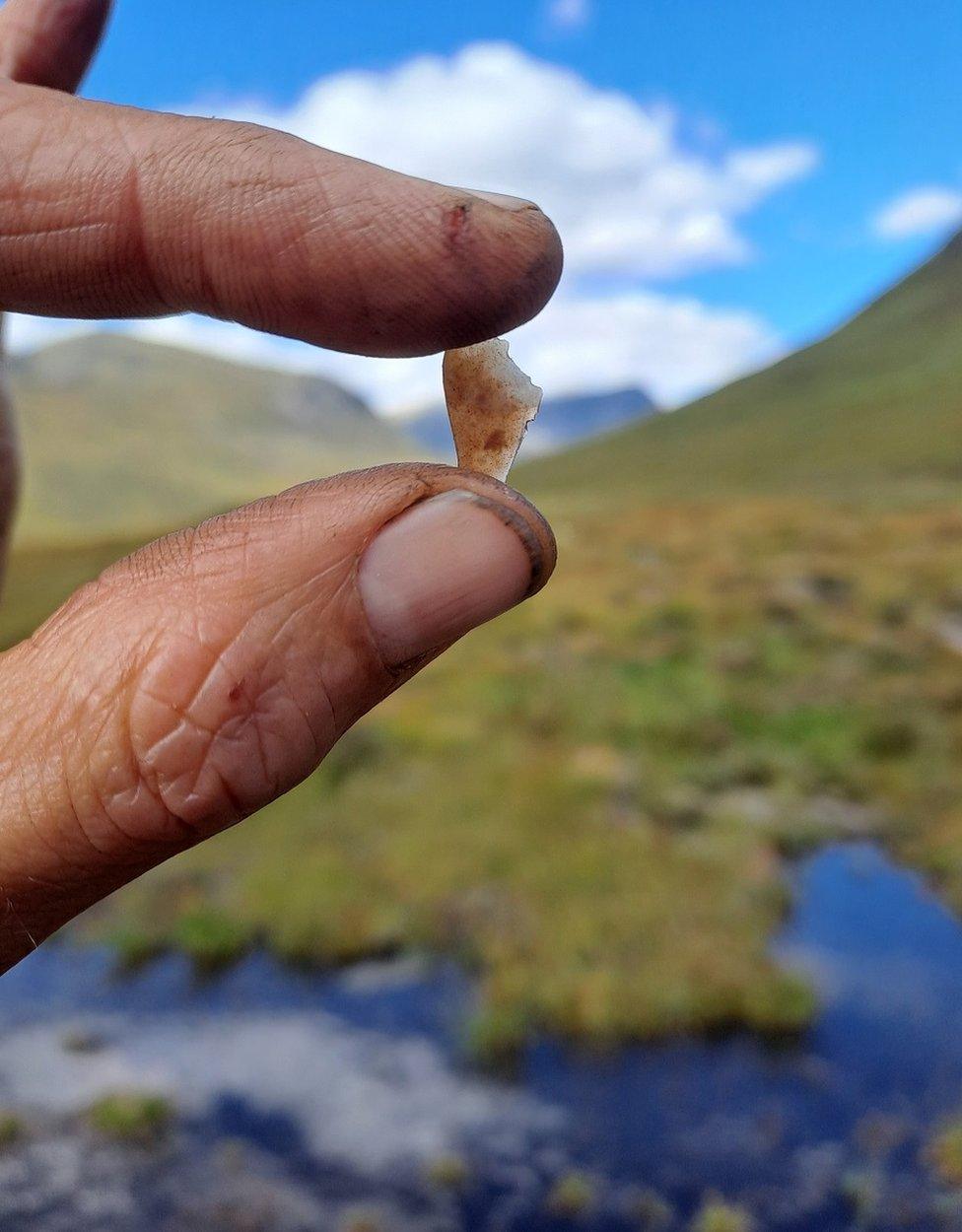
Flints, a by-product of stone tool manufacture, have been found at Sgòr an Eòin

Prof Graeme Warren, of the School of Archaeology at UCD, joked: "For a long time I thought this was a cursed site.
"We had money to go back there in 2019 and about four weeks before we were due to start work National Trust for Scotland phoned us up and said there was a peregrine falcon nesting on the cliffs, so we couldn't go there.
"Then in 2020 the Covid pandemic stopped us going."
The planned work finally started in 2021 and a team returned to the site this year.


Last month, a team from UCD worked with archaeologists from Norway's University of Stavanger and local group Mesolithic Deeside, in an excavation at Sgòr an Eòin.
Prof Warren said 200 tiny flint artefacts - the debris from tool-making - were found. The nearest source of this type of stone for making tools would have been about 43 miles (70km) away on either the Aberdeenshire or Moray coasts.
Laboratory analysis of the finds along with charcoal and soil samples from Sgòr an Eòin has still to take place.
Radiocarbon dating has still to be done, but Prof Warren said it was believed the site is Mesolithic.
He said: "What it seems like is someone or a small group of people have come up to this place and stopped there for a short time.
"There were fires involved, because we have charcoal, and they have manufactured a few tools as we have got some distinctive by-products of those tools. And then they have carried on their journey."
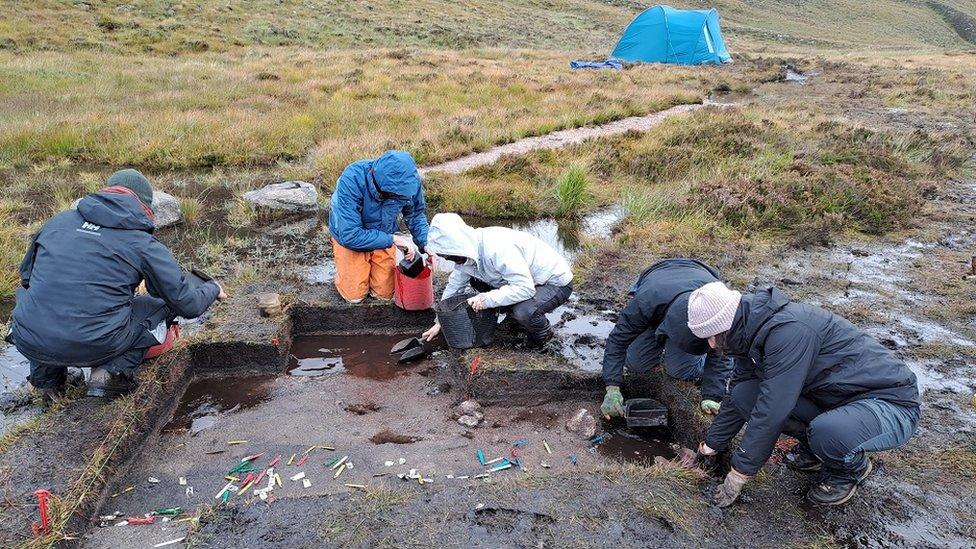
Digs in the Cairngorms can be challenging due to the terrain and weather
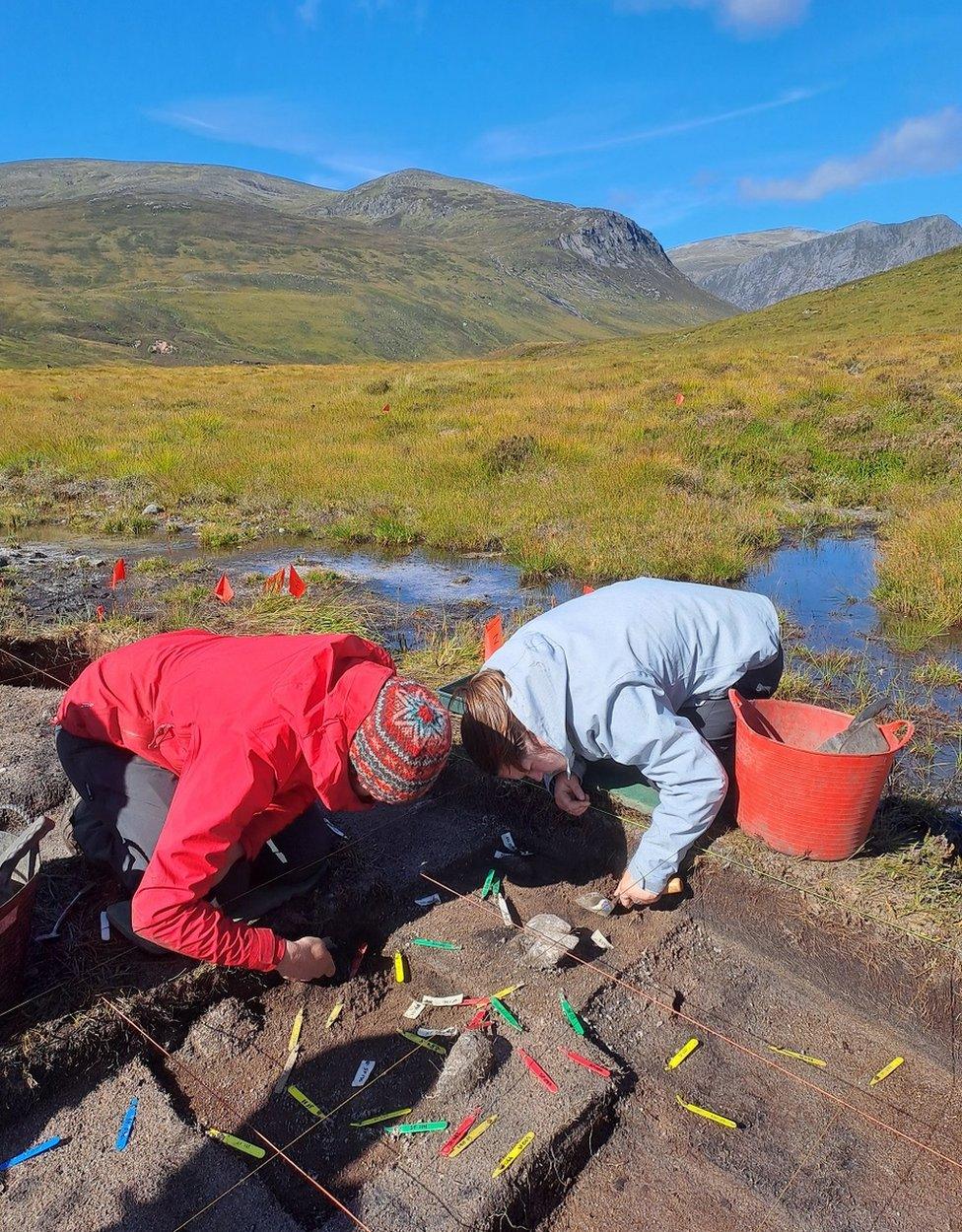
This year's excavations built on earlier investigations at the site

Prof Warren said at the time the area would have been wooded, or on the edge of woodland, with the hunter-gatherers possibly travelling through the glen and on into the Lairig Ghru mountain pass.
Today, the same route is popular with hillwalkers trekking from Braemar to Aviemore.
Prof Warren said in Mesolithic times, people may only have stopped at Sgòr an Eòin for an afternoon, a night's stay or for a couple of days.
He said: "It is quite unusual in that it is such an intimate little snapshot of just a few moments."
The Sgòr an Eòin excavations have been funded by the Society of Antiquaries of Scotland with support from NTS Mar Lodge Estate and Aberdeenshire Council.
Further work is planned for 2023.
Related topics
- Published16 March 2022
